
Be a Land Steward.
Sign up for Greenhouse Gases -
a weekly-ish newsletter that will teach you the science behind regenerative gardening, with action steps to help you make a difference in your backyard.

Sign up for Greenhouse Gases -
a weekly-ish newsletter that will teach you the science behind regenerative gardening, with action steps to help you make a difference in your backyard.
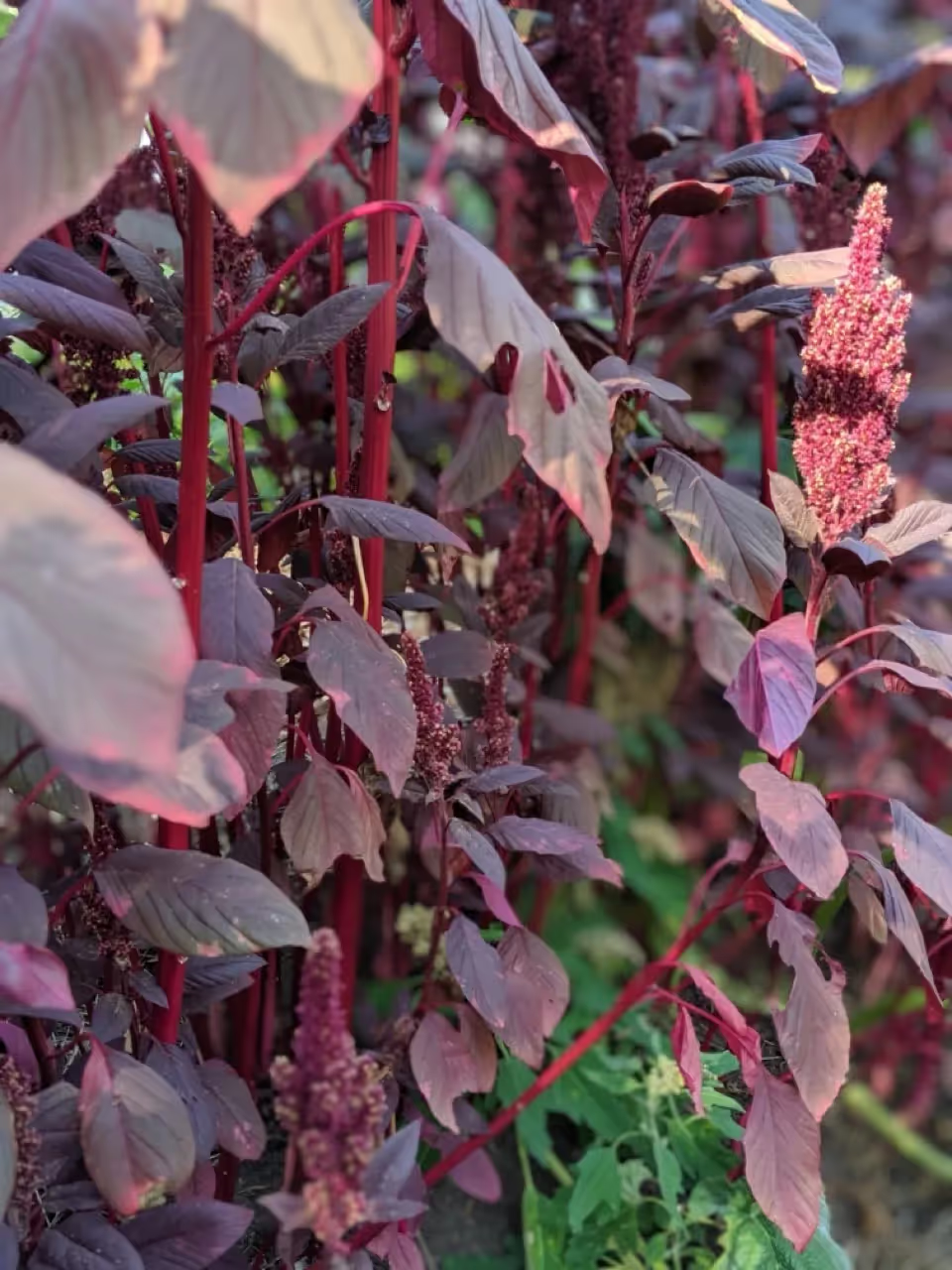
Amaranth Genus: Amaranthus
Amaranth meaning: “a flower that never fades”
Amaranth pronunciation: “am” as in Sam, “a” as in “at,” “ran,” rhyming with “van,” and “th” as in “ninth.”
Plant Height: 3-8 ft tall: grain varieties in ideal conditions on the taller side
Amaranth Color: Leaves, Stem, and Blooms are usually red for grain or dye. There are some varieties with green leaves, and other bloom colors. Seed color ranges from beige to almost black.
Uses: Gluten-free Grain, Salads, Bouquets, Dye, Dry Gardening, Land Remediation, Readily self-sows
Growing Habit: Annual, but happily re-seeds itself
Production: 1-2 pounds of seed per plant when grown in optimal conditions
→ Warning: Do not eat leaves if you have issues with kidney stones. Do not plant amaranth in an area where heavy nitrogen fertilizer has been applied in the past.
Amaranth isn’t just a grain of resistance due to its persistence and adaptability - it also has a long history of overcoming the obstacle of colonisation.
Amaranth was a big part of the diet of the Aztecs and Mayan peoples, and was also a part of certain religious ceremonies.
According to Native Seeds, it has been cultivated on Turtle Island for millennia.
The Institute of American Indian Arts shares that this brilliant grain was so powerful that Spanish colonizers banned it from being grown. The conquistadors attributed the strength of the Indigenous people to amaranth.
All of the amaranth fields were burned intentionally and the grain was outlawed. The hands of anyone who grew this food source would be cut off.
Luckily, amaranth has a tendency to self-sow, and began to grow in the wild. The Seed Travels Project shares that Maya women would gather these seeds in secret.
→ Learn about the work that The Garden’s Edge Seed Travels Project is doing to decolonize amaranth and spread its teachings across its original habitat.
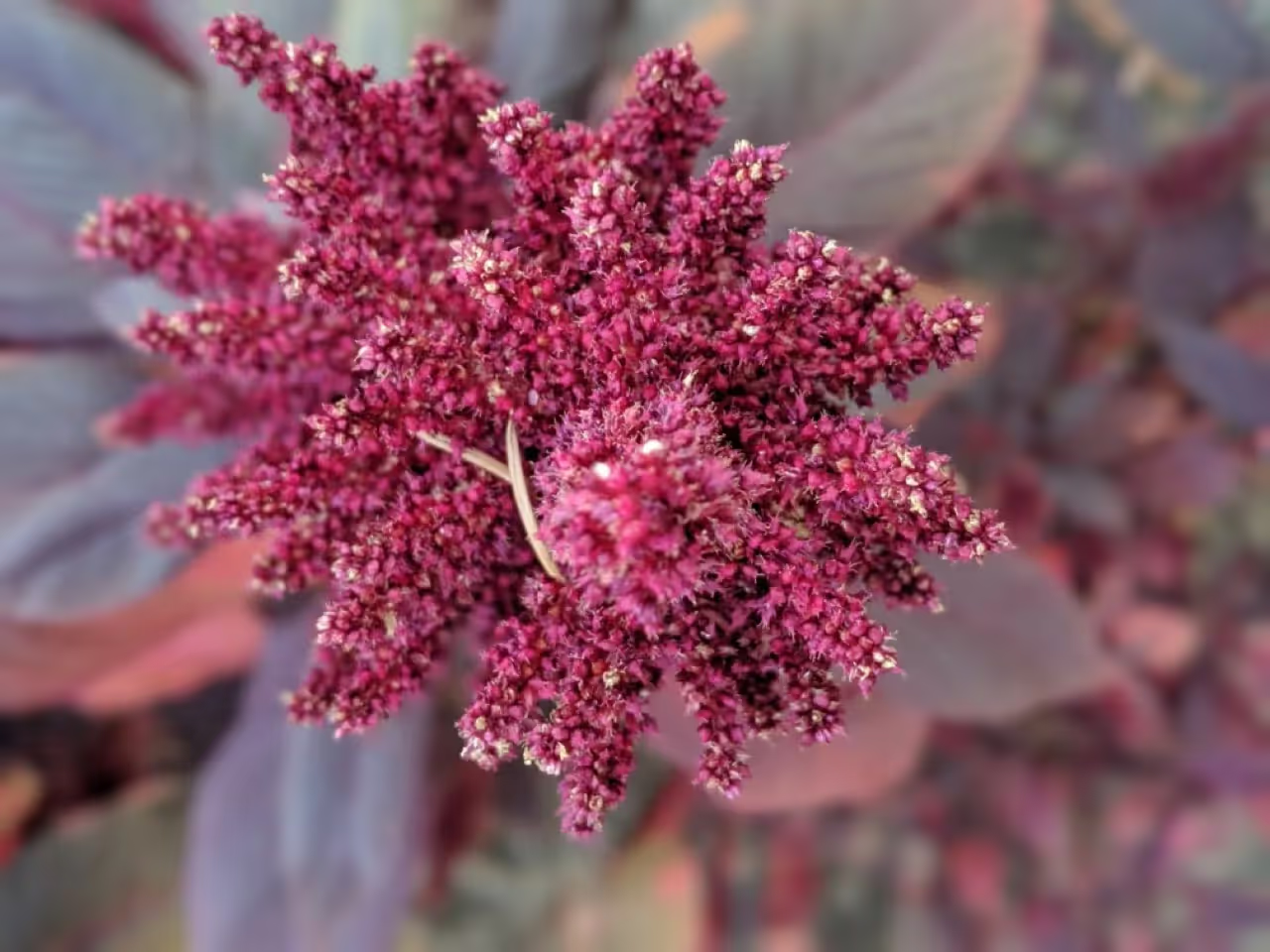
Amaranth is commonly referred to as a grain, but technically is a pseudo-cereal (Thapa). The “grain” that we refer to is actually the seed, which grows in plumes on top of the tall plants.
The seeds are extremely small, and in grain-production varieties are a light beige color. The color is similar to quinoa, but the seeds are about half as small and more ball-shaped.
Since amaranth is a seed, it is gluten-free and is a great option for celiacs and gluten intolerant individuals.
The taste is often described as “earthy” and “nutty.” I find it to be slightly crunchier than quinoa, in that it retains its globe shape after cooking.
Amaranth leaves are also edible. Certain Amaranthus species are grown for grain, others for leaf production, and others for ornamental value and dye.
Amaranth has immense value as we see the effects of climate change unfold: it’s a very drought and heat tolerant plant. This resilient plant is a top-pick for sustainability and self-sufficiency.
There are three amaranth species commonly grown for grain:
-Kent’s Technology of Cereals, 2018
Other kinds of Amaranth:
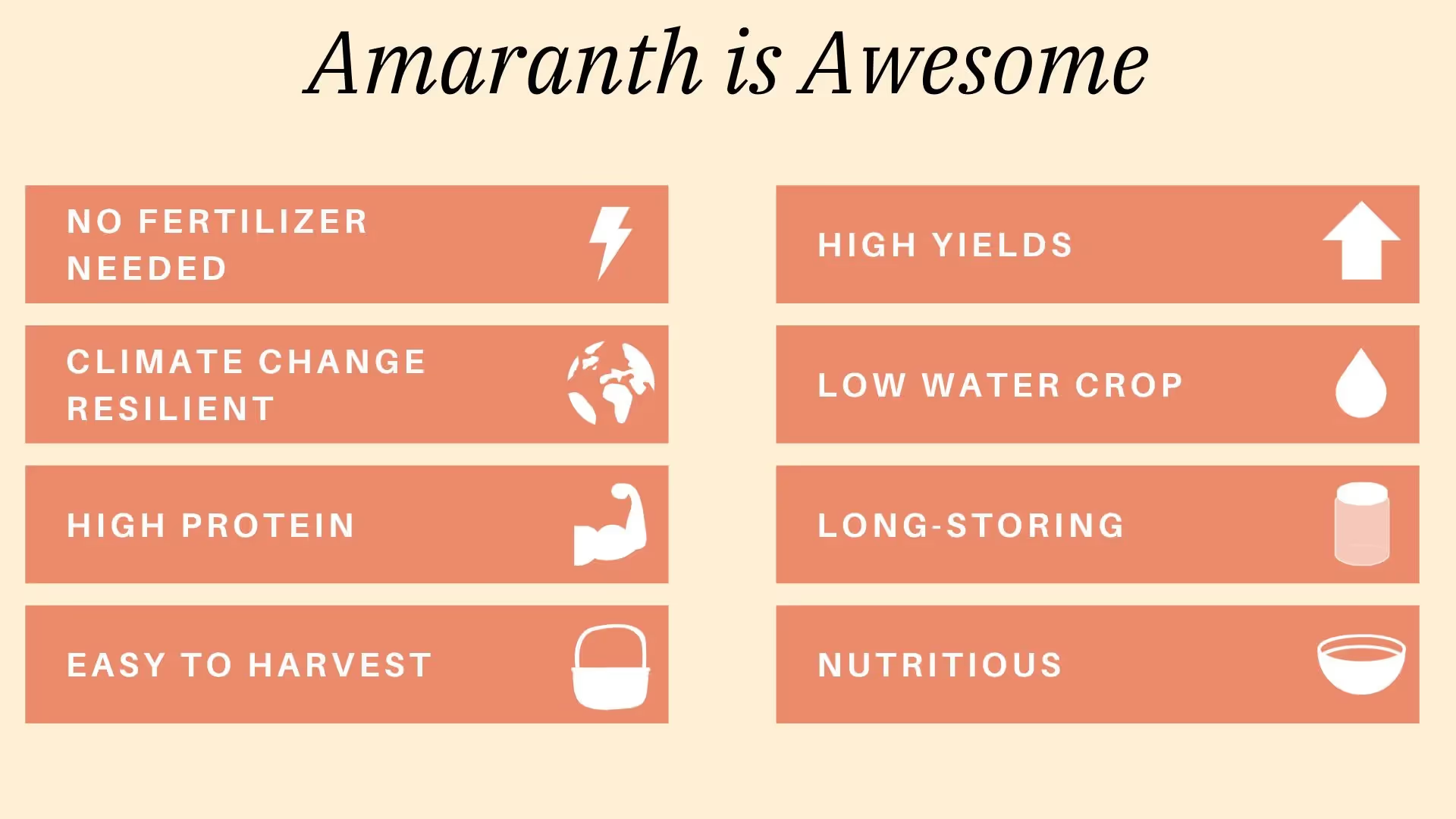
Red Amaranth is one of those plants that will be supportive for humans in the coming years as climate change threatens other staple crop yields.
It can survive through high temperatures, and does not need perfect soil to grow.
What’s exceptionally valuable about amaranth is that it does not need much water. In my dry summer climate, my amaranth still thrived if I watered it every 7-14 days. This is very different than most other crops, which need to be watered much more frequently.
The low-input needs of amaranth make it a crop with growing popularity among sustainable gardeners.
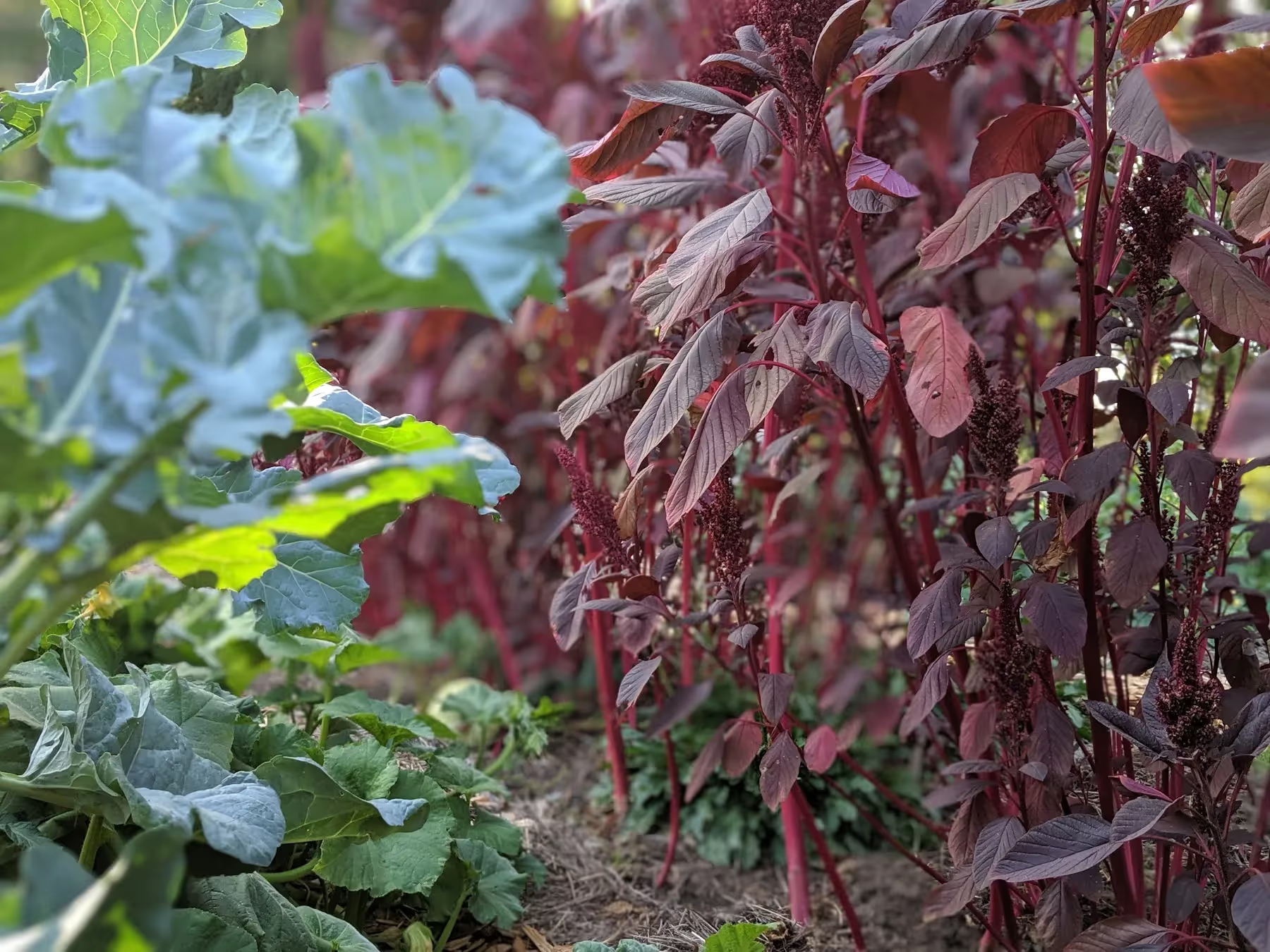
Amaranth grows quickly. It gets established fast, which supports its resilience. Amaranth can be harvested in as little as 90 days. This means that amaranth can grow in a variety of locations, even with shorter summer seasons.
Other benefits include that amaranth has a great yield: 1 plant yields around 1 pound of grain.
Compared to other grains which need to be hulled, amaranth is a breeze to harvest. It just needs to be winnowed, a simple and low-tech process that can be done with wind or a fan.
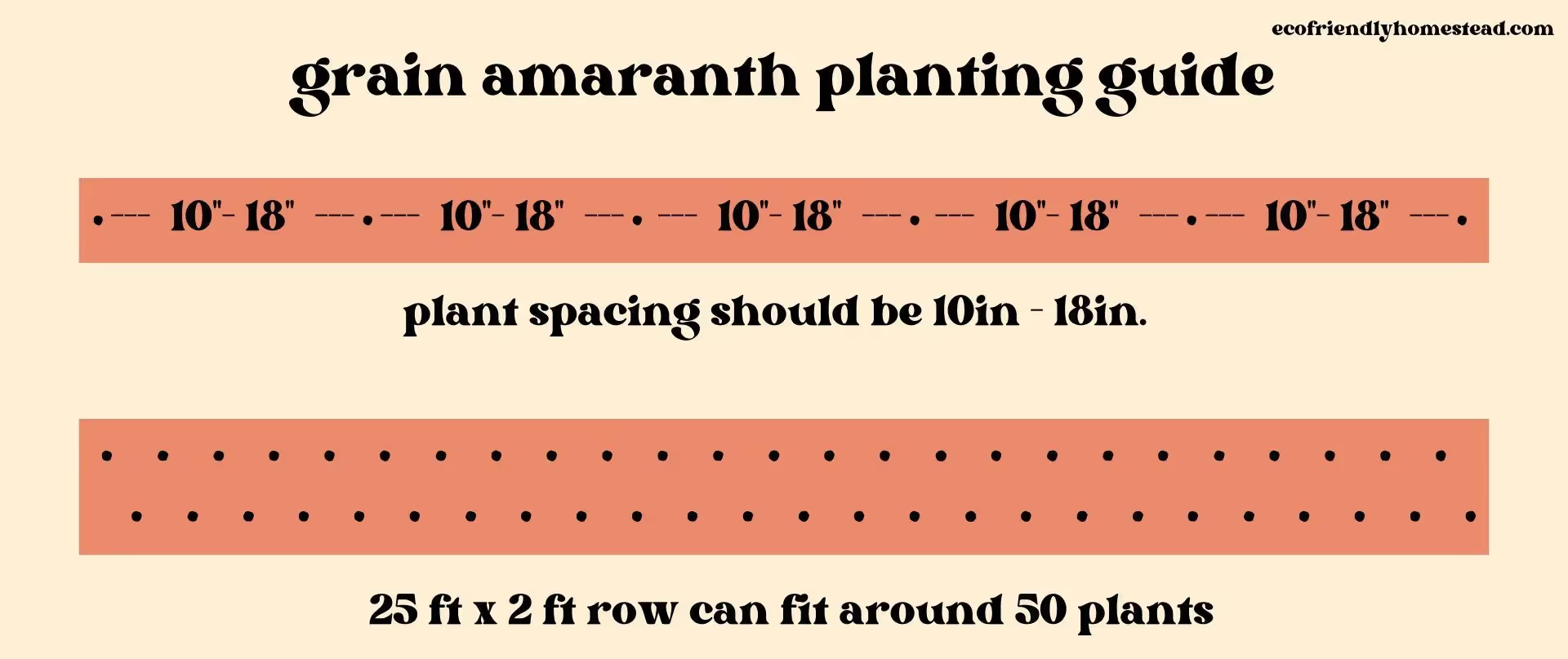
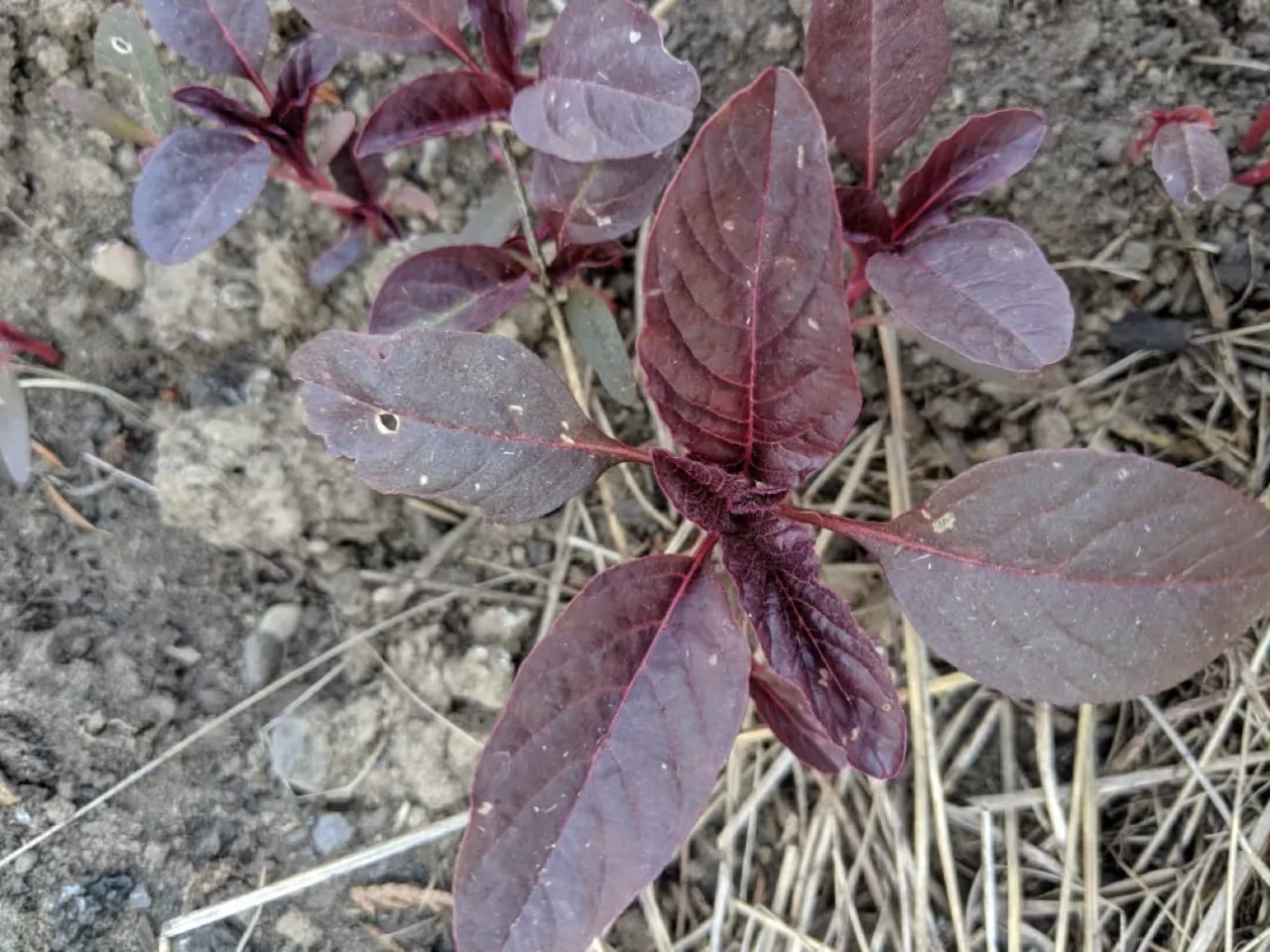
To grow a significant amount of amaranth, direct sowing is easiest and recommended.
Check if seeds are ready for harvest by taking a small cluster of seeds in your hand. Rub seeds in your hand to remove the red outer coating.
Seeds are ready to harvest if they are opaque (not translucent) and if they are not easily dented by your fingernail. Harvest before the birds get to it first :)
Iowa State Extension shares a technique of farmers in colder climates: wait to harvest amaranth until after the first killing frost. This will make it easier to harvest the seeds.
It’s not recommended to wait if the seed is ready before this, because then a lot of seed can drop.
Cut the top parts of the plant off to harvest the grain. Leave the stems and leaves behind as mulch. Keep roots in the ground to let decompose and nurture the soil.
Process the grain as soon as possible after harvest to prevent mold.
Hang stems in a well ventilated place with a cloth underneath to catch any falling grain between harvest + processing.
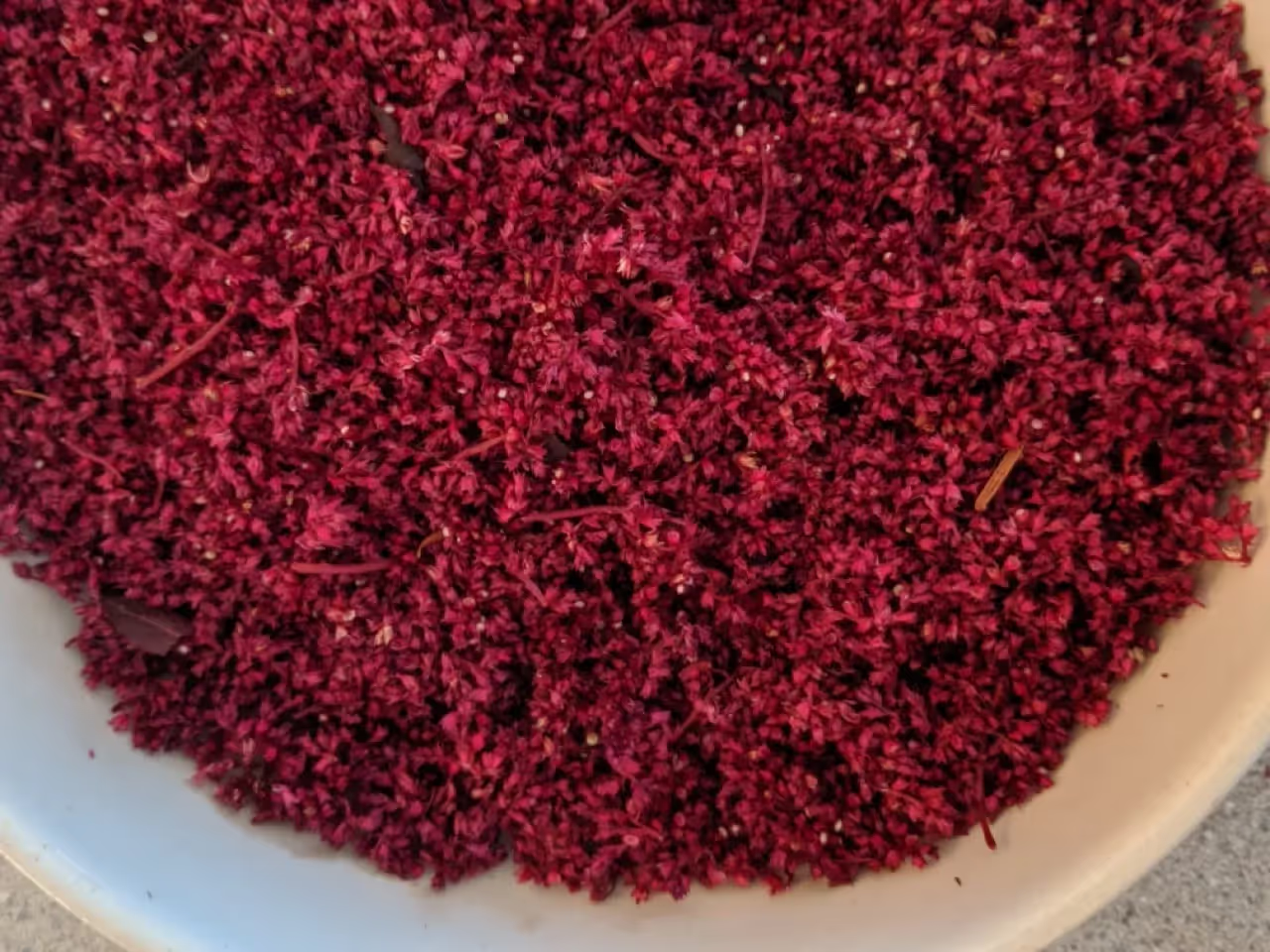

In the image above, the first image is the amaranth seed I harvested this past summer, before winnowing. In the second photo, you can see some of the amaranth grain partially hulled. The beige seeds have successfully shedded their hull. The red seeds have not yet.
The hull coating is very light, and will shed in the wind. Simply process the seeds on a windy day or place a fan in front of your amaranth. You'll want to do this outside.
Take some amaranth with your hand, and lift it up around 2 feet above a bowl. Slowly let the amaranth seed fall into the bowl. The wind will remove a good number of the hulls for you. You'll need to repeat the process several times before all of the hulls are removed.
Alternatively, the outer coating will also float off in water.
Soak the seeds in water and stir. Skim off the red particles that float to the top. After doing this a couple of times, you’ll be left with just the beige grain.
While this process is quicker, the wet grain will need to be eaten within a few days.
Store in the refrigerator until you cook it.
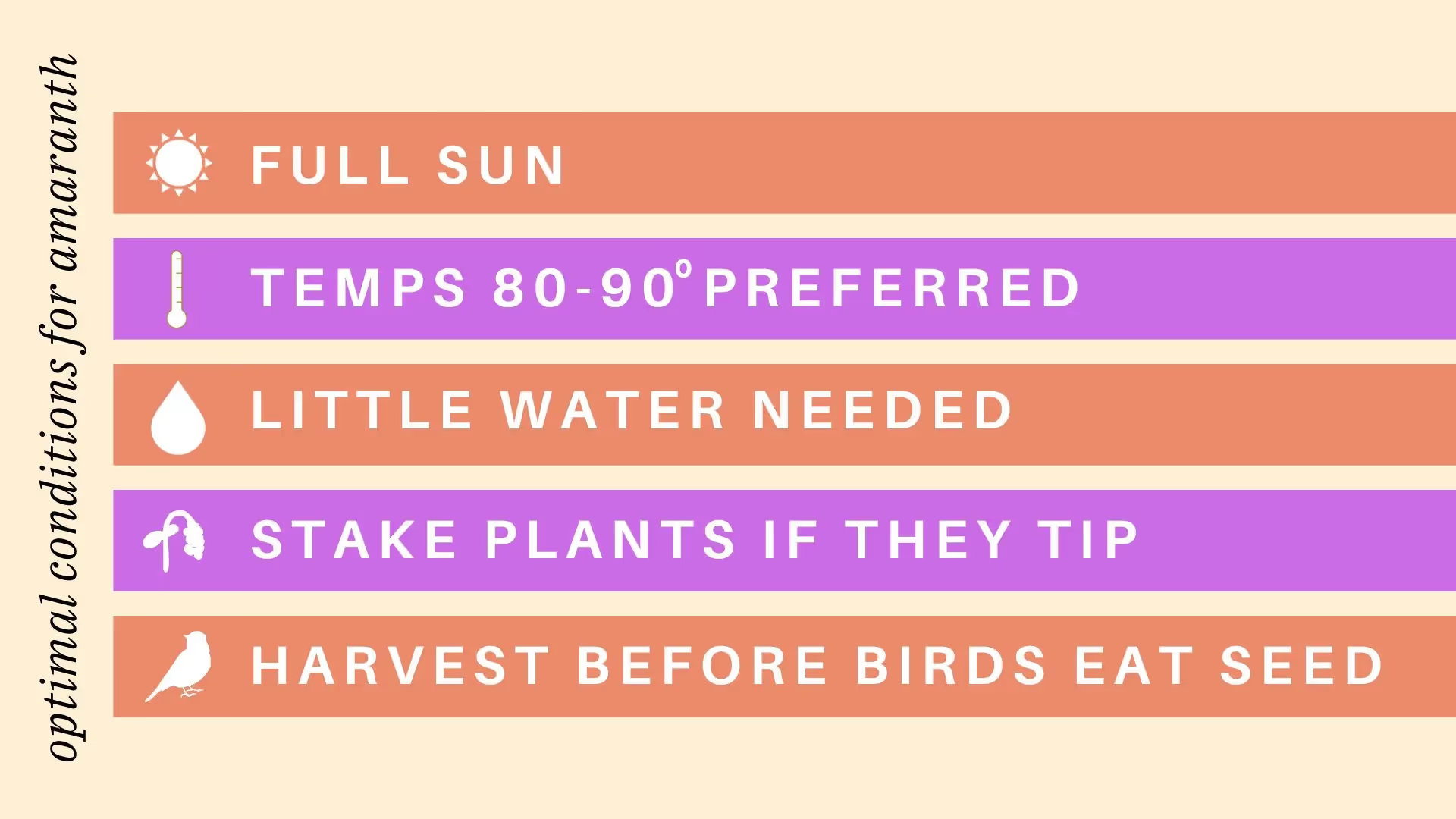
Amaranth really thrives in sunny conditions
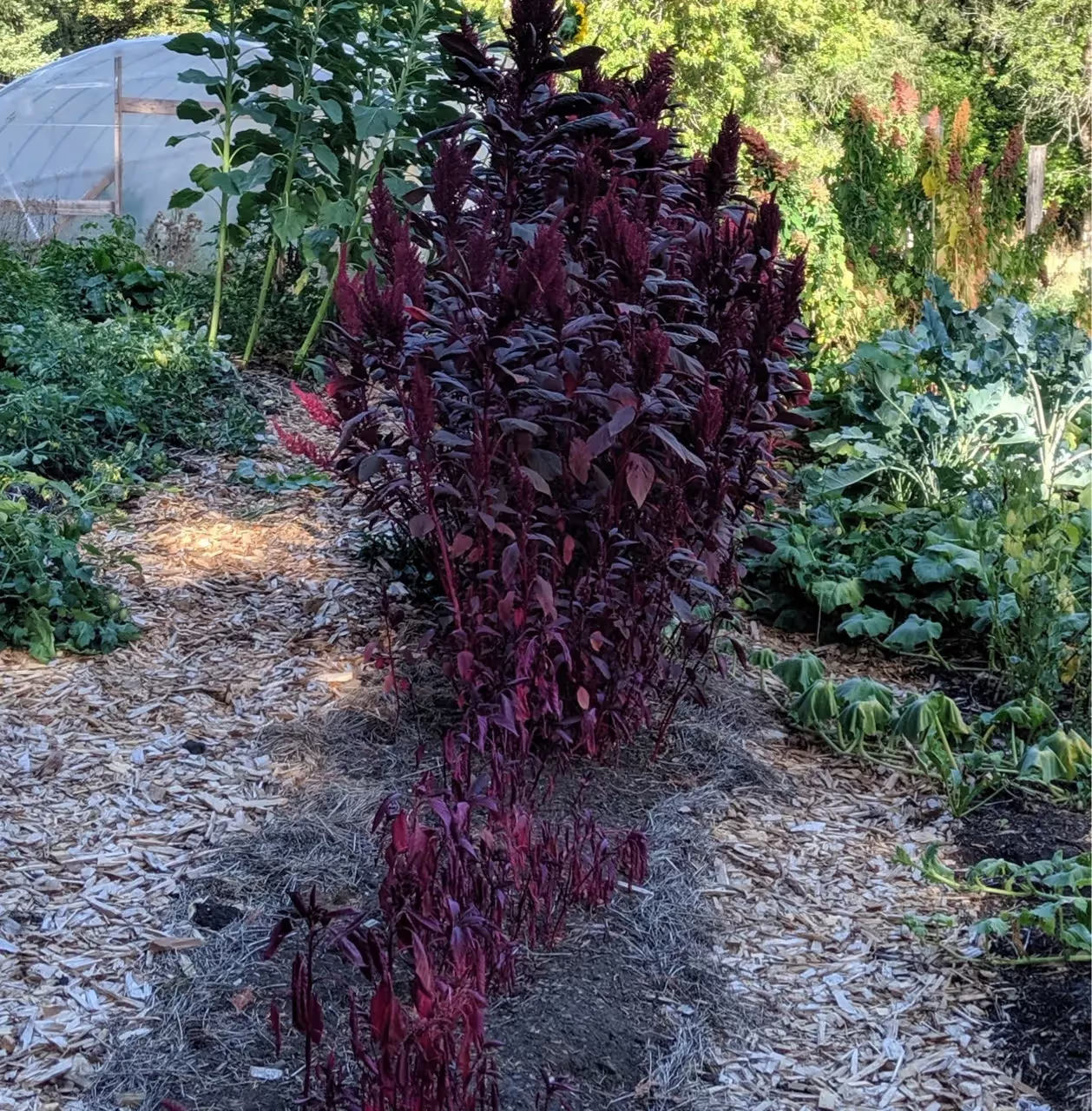
I saw this first hand in my own garden. I planted a row of amaranth in a sunny spot. However, one half of the row started to get shaded out at around 4pm during the summer months. The other half of the row had full sun until around 7pm.
Those extra hours made a huge difference in the success of the plants. They grew 1-2 feet taller in height and had 8-10 times the seed harvest at the end of the season.
Amaranth needs little water to grow
Amaranth can suffer in a rainy season. Iowa State Extension mentions that if the soil is oversaturated with water, seedlings can become diseased. Towards maturity, heavy rains can cause the plants to fall over and pile on top of each other. This lack of circulation on the flower heads can lead to moldy seeds.
Amaranth’s low water needs make it a great food to grow as drought and high temperatures become more common due to climate change.
Heat doesn’t bother amaranth
Amaranth enjoys hot days and thrives when other crops get scorched or wilt.
Due to its need for heat, Amaranth does best in zones 7 and up.
If you are in a lower zone but have 3 months of warm sunny weather in summer, amaranth will probably also thrive where you live.
Native Seeds:
New Mexico (Green)
Weywi Cupelli (Red)
Chihuahuan Ornamental (Orange-Red)
Maya Guegui (Red)
Moenkopi MIx (Green)
Huazulco Alegria (Red)
Okite (Red)
Huatl (Green)
Komo (Red)
Mexican Green
Marbled (Pink)
Diag (Red)
Chacari - Mano de Obispo (Celosia)
Rio San Lorenzo (Green)
Guarijio Guegui (Red)
Paiute (Red)
Alliance of Native Seed Keepers:
Hopi Red Dye
Red Garnet Amaranth
Wild Garden Seeds (PNW Adapted):
Hopi Red Dye
Polish
High Desert Seed (short season adapted):
Hopi Red Dye
Burgundy
Nature & Nurture Seeds (short season):
Fercita Amaranth (Red, Pink, Green Mix)
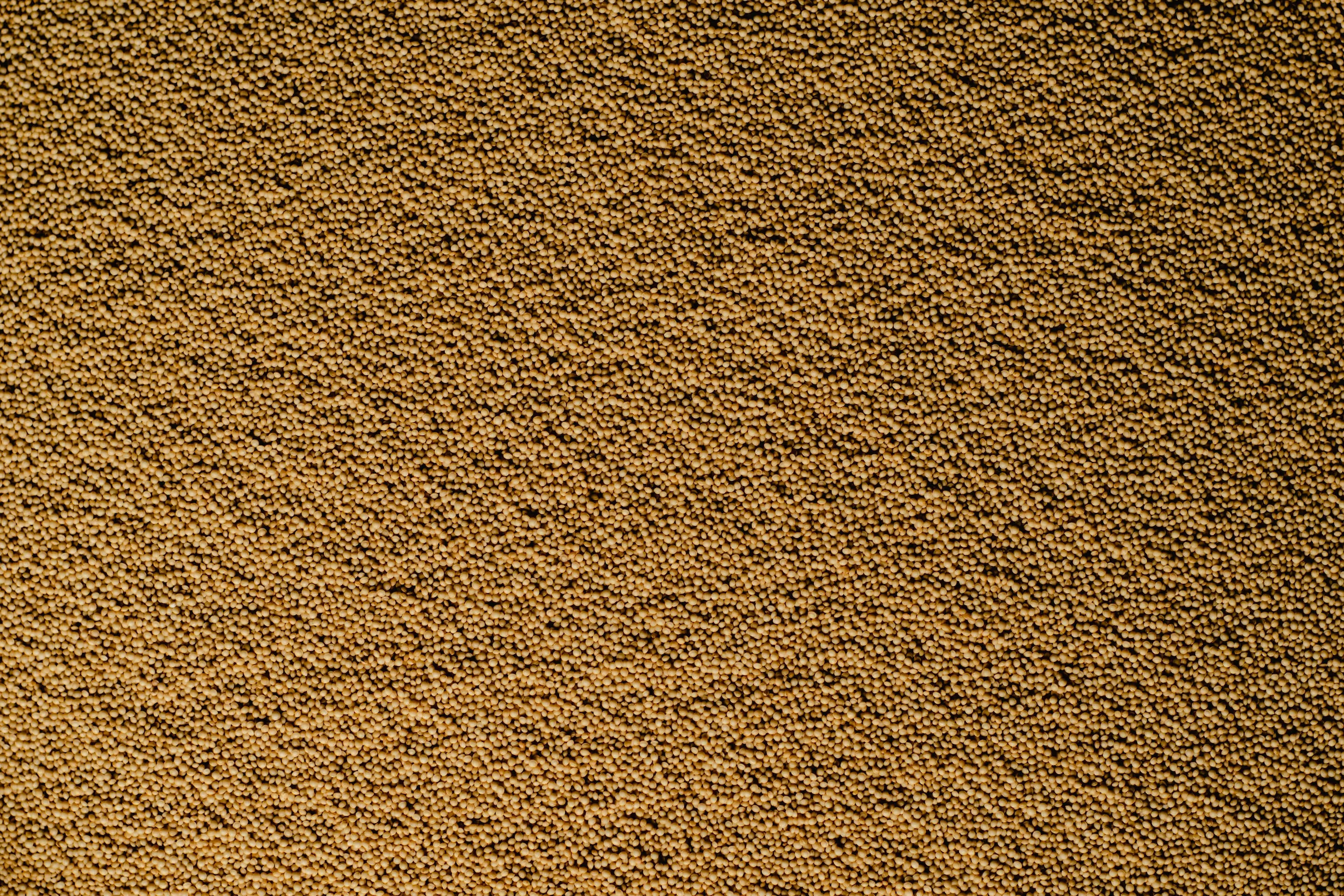
According to MSU Extension, amaranth contains high amounts of protein, higher than any other grain. It has a nutritional profile similar to quinoa, and is a complete protein that provides all the amino acids.
As an added bonus, amaranth is gluten-free!
For comparison:
1 cup of dry amaranth contains 28 grams of protein;
1 4oz. hamburger patty also contains 28 grams of protein
1 cup of dry rice contains 15 grams of protein
1 cup of dry oats contains 10.65 grams of protein
Native Seeds notes that the leaves offer vitamins, specifically calcium and iron. The leaves actually contain more iron than spinach! Additionally, they mention amaranth’s high lysine content.
Amaranth has more fiber than other common grains, and even more fiber than soybeans (BioScience 1986).
After you harvest, winnow and dry the amaranth seeds, you’ll store them in a dry jar until you’re ready to cook.
At that time, it’s important to know how to prepare the seeds.
In a fine mesh strainer, rinse and clean the seeds several times before cooking.
Measure out your amaranth grain, and then cover with 2-2.5x as much water.
Cook as you would rice: bring water to a boil; turn heat down to low and cover. Let simmer for 30-40 minutes, or until the seeds are thoroughly cooked and no residual water remains (Bob's Red Mill).
Add a pinch of grated ginger, raisins, and maple syrup for a sweet breakfast.
Or season with your favorite spices, salt, some lard, and fresh stir-fried vegetables.
If you are working towards self-sufficiency, you know that growing your own flour can be a challenge. The good news is that Iowa State Extension has found that amaranth flour can be mixed in to baked goods at levels up to 75% without impacting quality.

One of the core principles of permaculture is to work with plants that have multiple purposes. This is referred to as "function stacking."
Amaranth offers many functions:
Additionally, the low-input and drought-tolerant attributes of amaranth make it an attractive permaculture plant.
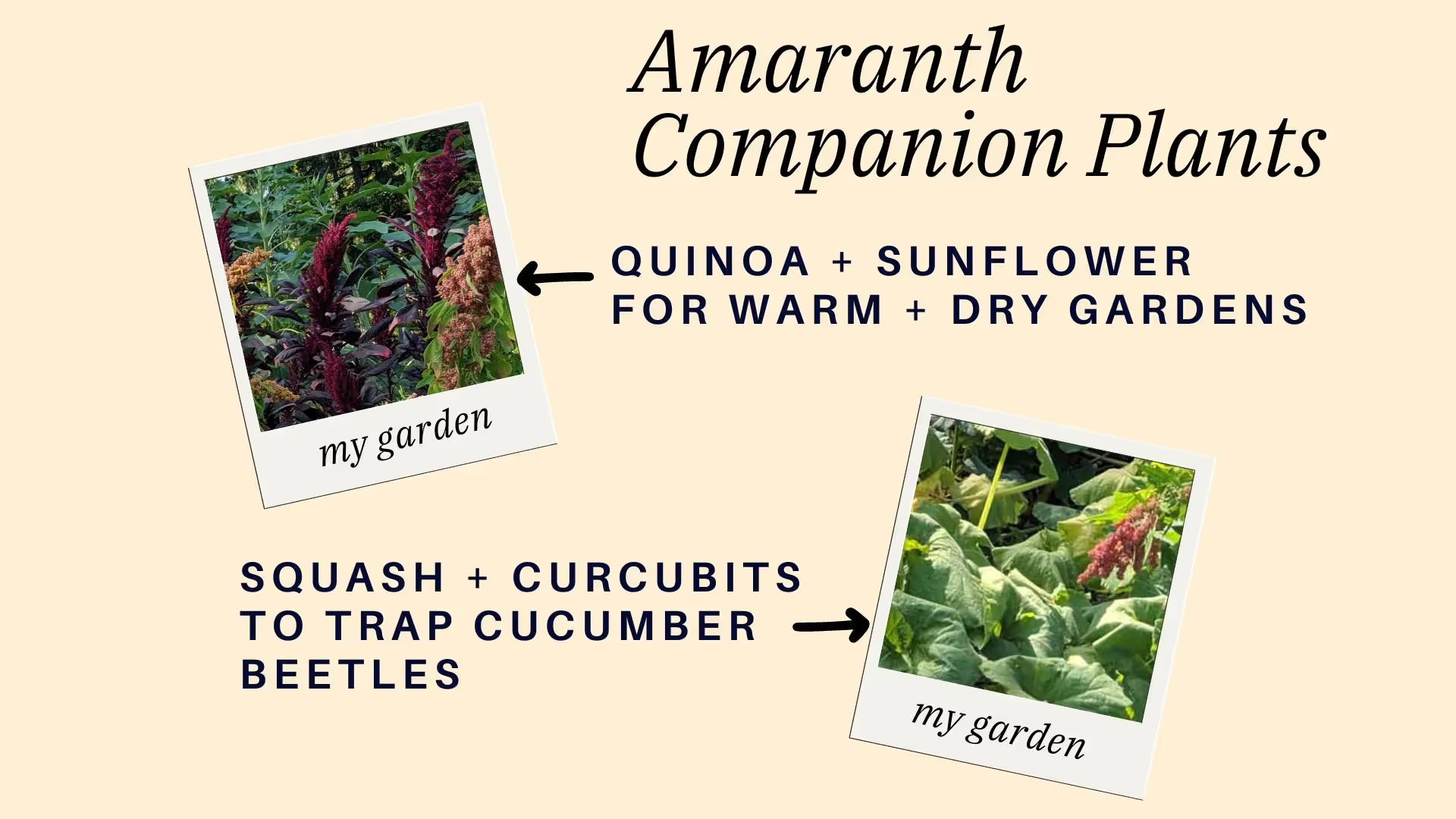
Quinoa and Sunflowers
Quinoa and Sunflowers are tall, gorgeous, seed-producing plants like amaranth. These plants also need full sun in order to thrive, and succeed well in low water conditions.
I planted these three together in my garden and loved the results. All three plants can be sown at the same time, and have similar growth rates. They will also be ready to harvest around the same time. A fantastic homage to the seed caretakers of the Indigenous Americas.
Cucumbers
Amaranth is a fantastic companion plant for curcubits.
According to a study published in Horticulturae, the root-knot nematode population and damage to cucumber decreased when these two crops were interplanted together.
The study concluded that amaranth as a companion plant may support healthy soil microbes to thrive. In turn, this decreases soil-borne pests and issues.
Other studies have shown different beetle pests are distracted by the amaranth in cucumber plots in different parts of the world too.
Winter Squash
I have not been able to find scientific studies showing that amaranth is a trap crop for the squash bug pest.
However, I saw in my own garden that amaranth had squash bugs on the flower buds. This study from 2018 also noted squash bugs on amaranth plants.
My amaranth was planted next to a row of winter squash. The winter squash were not impacted by the squash bugs and I did not spot any bugs on those plants.
However, the University of Wisconsin-Madison shares that the natural predator of the squash bug, tachinid flies, enjoy the nectar of amaranth flowers. It may be that these beneficial insects controlled the squash bug population for me.
Other vegetables impacted by root-knot nematode: pepper, pumpkin, soy, okra
The Meloidogyne root-knot nematode is a common pest in gardens and farms. It has been found that when amaranth is interplanted with pepper or pumpkin plants, the main crops were less impacted by the pest.
The same results happened with soybeans and okra.
You can infer that similar results would occur in tomato patches impacted with RKN.
While all photosynthesizing plants sequester carbon into the soil, amaranth has an advantage. Typically, perennials have the ability to store more carbon in the soil than annuals. But for an annual plant, amaranth has a high capacity for storing carbon in the soil.
This is because grain amaranth is a C4 photosynthesizer. Put simply, it is very efficient in how it engages in photosynthesis, and this results in the plant storing more carbon in the soil.
Why Amaranth is suitable for dry gardens
I was delighted when I saw how well my amaranth crop did with very little water. I only needed to water it once a week or every other week, depending on heat levels. If you get rain at least once a week throughout the heat of the summer, you probably will not need to hand water your amaranth crop.
I live in an area that does not get much, if any, rain during the summer. Water conservation is important for sustainability, but it’s also essential for me to be able to grow anything. I’d run out of water in July if I did not implement different practices to save water.
Amaranth on a warming planet
As the average temperature increases and heat domes and record high temperatures become more frequent, many crops will suffer.
Amaranth is a great crop to lean on during these times, as it's a proven heat-resistant plant.
Amaranth: The flower that never fades. With its own persistence through times of colonisation and its promise for the present and future in climate crisis, I’d say that it was aptly named.